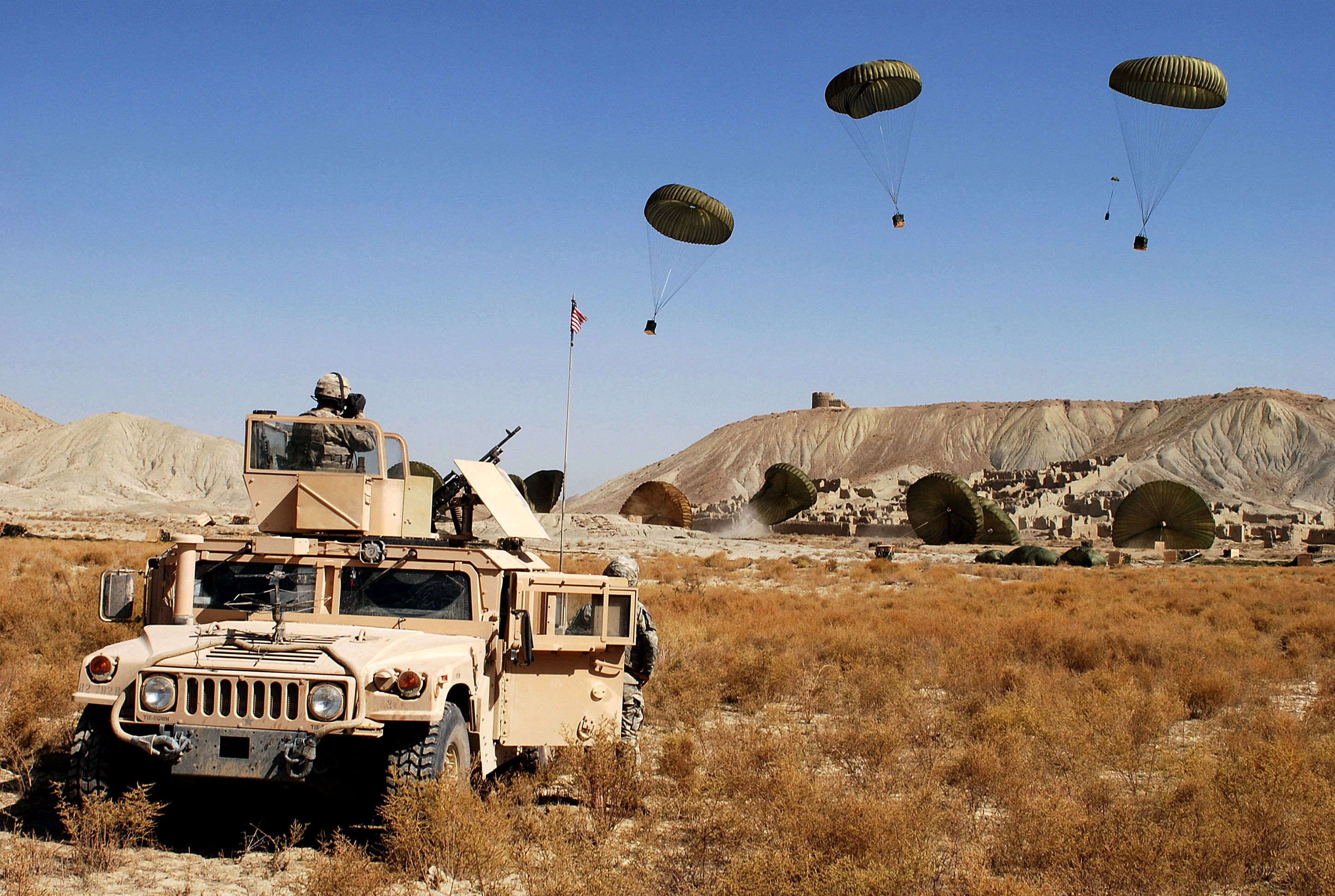WASHINGTON — U.S. forces conducted the first airdrop of military supplies to U.S. troops in Afghanistan since September 2014, a sign of increasing military operations in the nearly 16-year war.
It’s a worrying indication that the war in Afghanistan is continuing to deteriorate as a resurgent Taliban gains ground, threatening major population centers in the war-torn country.
U.S. forces generally conduct airdrop resupply missions to sustain ground forces in remote or high threat areas.
“In order to keep our aircraft and aircrews out of harm’s way, we have been attempting to airdrop supplies into areas which have historically seen higher levels of engagements against airborne assets,” a U.S. Air Forces Central Command spokesman (AFCENT) told Military Times.
During the height of the Afghanistan war, U.S. forces operated nearly 400 bases, including forward operating bases and small remote outposts. Afghan forces operated another 300 bases, according to a report from CBS News.
Many of those outposts required constant resupply by U.S. Air Force C-130 crews due to remote mountainous terrain and high concentrations of Taliban fighters threatening aircraft.
In 2011, as Obama’s troop surge was well underway and nearly 100,000 U.S. personnel were on the ground, American aircraft dropped nearly 80 million pounds of supplies to help maintain combat operations, according to figures provided by AFCENT.
As the Obama administration pressed for a draw-down in America’s participation, those numbers quickly dwindled by nearly half to just over 40 million pounds in 2012, and again to a paltry 28,000 pounds in 2014.
From 2014 on, the U.S. recorded zero airdrops of combat and logistical supplies to ground forces — until this September.
On Sept. 1, “the 774th Expeditionary Airlift Squadron conducted the first combat airdrop in Afghanistan in more than two years,” an AFCENT spokesperson told Military Times.
According to AFCENT figures, 12,000 pounds have already been delivered to ground forces in Afghanistan so far this year.
The airdrops could also be an indication that American troops may be operating closer to the front lines of combat than American officials have generally admitted.
Military Times reached out to officials in Kabul and AFCENT about the presence of new forward operating bases or outposts operated by American soldiers, but officials would not confirm whether any new American bases have been constructed, citing operational security.

American forces in Afghanistan are tasked with two primary missions — countering terrorism and al Qaida offshoots, and a train-and-advise mission known as Operation Resolute Support, in which American troops conduct expeditionary advisory packages, where American troops are advising Afghan troops at a more tactical level, according to Gen. John Nicholson, commander of U.S. forces in Afghanistan.
A 300-Marine task force known as Task Force Southwest — deployed in late Spring — has been advising the Afghan 215th Corps in the Helmand province. Those forces are not in a combat role, Maj. Kendra Motz previously told Military Times.
Marines have operated out of small outposts to support Afghan combat operations, like the mission in July where Afghan forces retook Nawa district back from the Taliban, but the Marines are never directly on the front lines.
Despite the expeditionary nature of the mission in Helmand, the Marines there have been supplied by traditional means, Motz told Military Times.
However, there are also U.S. forces operating in remote parts of Nangarhar Province, combating ISIS and al Qaida offshoots as part of the U.S. counter-terror mission.
Nicholson has vowed to defeat ISIS in Afghanistan before the end of the year, according to a Resolute Support press release issued after the death of Sheikh Abdul Hasib, one of three ISIS leaders killed by U.S. and Afghan forces this year.
It is not known whether the airdrops are a result of ramped up operations to defeat ISIS in Afghanistan or whether it indicates a picture of bleak security.
According to analysis from the Foundation for the Defense of Democracy’s Long War Journal, Taliban fighters currently control or contest roughly 45 percent of Afghan districts.
The lion’s share of the Taliban’s strength is centered in rural areas, which U.S. military officials have routinely argued are less vital, according to the assessment from Long War Journal.
Much of Nicholson’s plan touted before lawmakers in February hinged upon Afghan forces being able to control 80 percent of the population, predominately in urban areas and provincial capitals.
Rural areas, however, are used by the Taliban as a springboard for operations against urban centers and provincial capitals. In the last couple years alone, Kunduz city has temporarily fallen twice to the militants, and Marines in Helmand only recently have assisted Afghan forces in relieving pressure on Lashkar Gah, the capital of Helmand, by wrestling back control of Nawa district.
“The coalition and Afghan government cannot roll back Taliban gains or ultimately defeat it while ignoring the Taliban’s rural advantage,” the recent assessment by Long War Journal reads.
With districts continuing to fall to the resurgent militant group, Afghan forces and international allies are finding themselves in an ever deeper hole to dig out of.
The Trump administration has approved the deployment of several thousand more U.S. troops to serve as advisers to Afghanistan.
Shawn Snow is the senior reporter for Marine Corps Times and a Marine Corps veteran.





